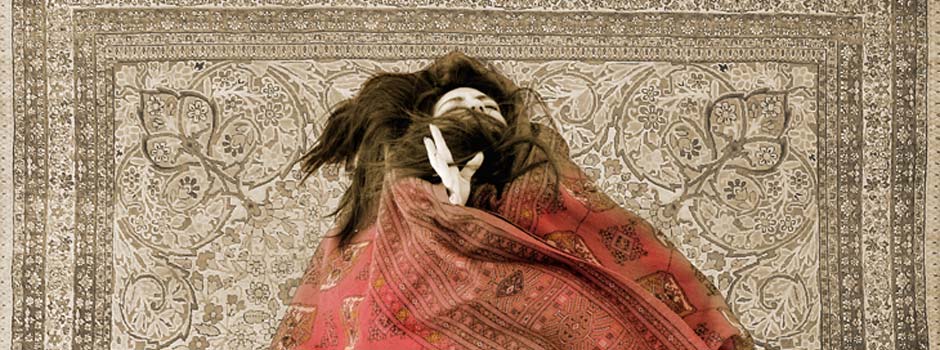
The exhibition by Iranian artists at GALERIE KASHYA HILDEBRAND New Perspectives in Contemporary Miniatures
Aug 30, 2012 Exhibition

Although the golden age of Persian miniature painting lasted from the 15th to the 17th century, the practice persists today, and references to it can be seen in the work of many contemporary Iranian artists. This exhibition explores four artists who use the dynamic visual language of traditional miniature painting to pursue innovation, incorporating storytelling, literature, and poetry into their practice.
The chosen works express a range of themes, but they all strive to reconcile traditional values with the contemporary moment, daily existence, and the particular complexities of our times. Suspended between fiction and reality, the works not only build on their traditional models pictorially but also elaborate on them conceptually, creating a continuum between past and present and transforming miniature painting into a mode of contemporary art practice. The formal elements of miniature painting –from its rigorous discipline and meticulous application to its central narrative function– connect the artists in the exhibition; however, each artist symbolically defines the notion of tradition in relation to which, or against which, the modern experience is presented.
Amir Farhad’s upbringing after the 1979 revolution and during the Iran-Iraq war significantly shaped his artistic voice. In his art, Farhad takes aim at the socio-economic class differentiation that has resulted from Iran’s transition from an era of fundamentalist revolution to one of increasing capitalism. His works demonstrate a multi-layered and indirect approach as well as a keen awareness of his social and political context. Of all the artists in the gallery’s show, Farhad engages in the most aggressive interventions in or interrogations of the miniature tradition. His inspiration was the 20th-century miniature painter Mohammad Tajvidi. Tajvidi’s works illustrated thousands of texts, including the famed Rubaiyat of Omar Khayyam, and his extreme popularity gave Fahrad the inspiration for his series.
Farhad’s works look like an outpouring of dense scribbles, but a close examination reveals signs of leftist idealism, rightist opportunism, working-class witticism, and bourgeoisie disillusionment – all of which come together in one coherent form. The mixed-media works are combined with texts that reference poetry and calligraphy. As he says, “I am the narrator and am illustrating what I have witnessed while growing up in this land… I want to fit many things into my work as if it is the last day and the last world and all should be expressed here and now.â€
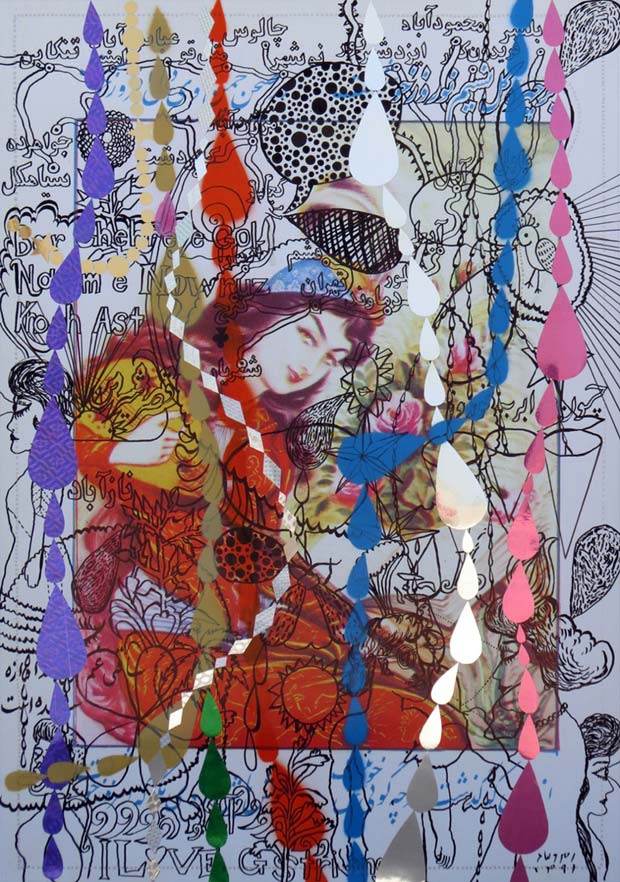 Amir Farhad / Beautiful women whose beauty shines like a silver, 100x70 cm, Mixed media on paper, 2012 / Courtesy of Galerie Kashya Hildebrand
Amir Farhad / Beautiful women whose beauty shines like a silver, 100x70 cm, Mixed media on paper, 2012 / Courtesy of Galerie Kashya Hildebrand
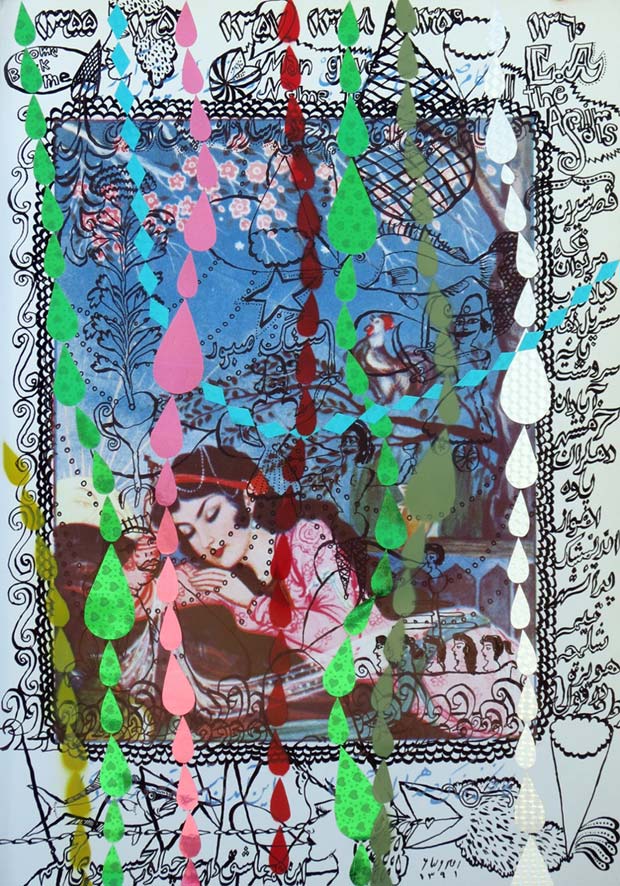 Amir Farhad / Behind her eye lids, 100x70 cm, Mixed media on paper, 2012 / Courtesy of Galerie Kashya Hildebrand
Amir Farhad / Behind her eye lids, 100x70 cm, Mixed media on paper, 2012 / Courtesy of Galerie Kashya Hildebrand
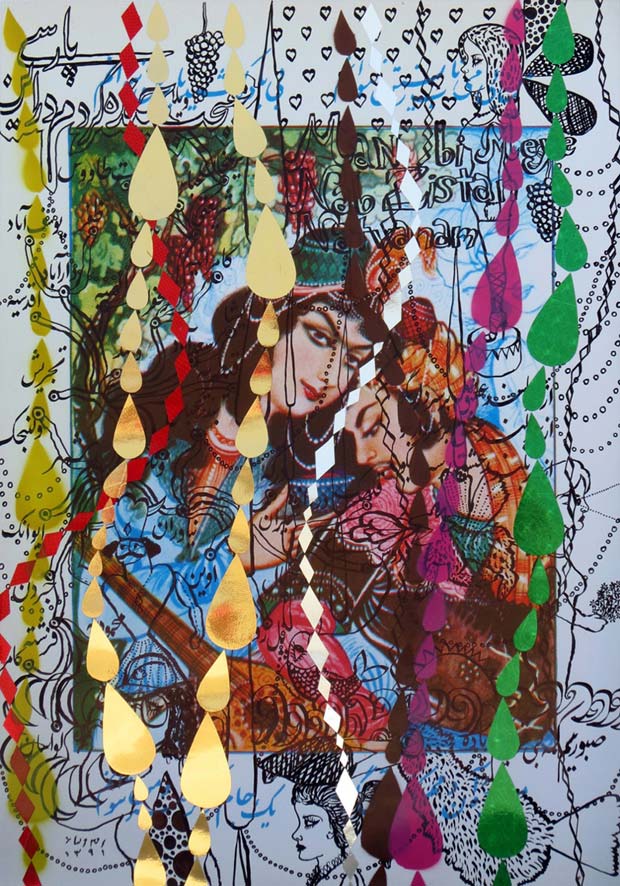 Amir Farhad / Shaharshanbeh Souri, 100x70 cm, Mixed media on paper, 2012 / Courtesy of Galerie Kashya Hildebrand
Amir Farhad / Shaharshanbeh Souri, 100x70 cm, Mixed media on paper, 2012 / Courtesy of Galerie Kashya Hildebrand
In The Exit of Farhad and Shirin, Babak Kazemi often references the traditional representation of Farhad and Shirin on Bisitun Mountain. Over time, these iconic star-crossed lovers have come to symbolize all lovers doomed to separation, much like Romeo and Juliet. In his reworking of the tradition, Babak replaces Shirin’s horse with a bicycle, signifying his modern interpretation of the story and its contemporary relevance. In addition, he substitutes various couples in the roles of Farhad and Shirin.
Unlike the traditional painted representations of an idealized couple alone in the mountain wilderness, Kazemi uses photography, depicting the couples as real lovers in the contemporary moment but posing them like figures in traditional miniature paintings. The result is a compelling juxtaposition of past and present. Some works depict a young couple suspended in a cloud of timelessness; others show a young couple in a more recognizable place and moment; and another depicts an elderly couple in an almost surreal setting, perhaps symbolizing the endurance of love.
However, while many traditional representations of the lovers show them gazing at each other or looking forward in the same direction, Kazemi’s lovers never gaze at each other or even in the direction of their journey, thus signifying Kazemi’s sense of the impossibility of love. There may not be a king thwarting Kazemi’s couples’ happiness, but his works suggest that love still faces insurmountable barriers.
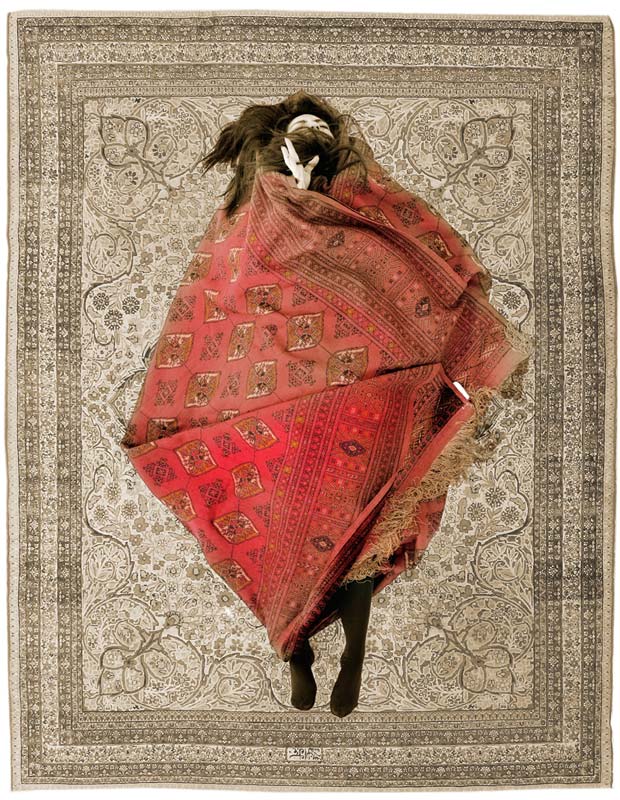 Babak Kazemi / The exit of Farhad and Shirin, 100x70 cm, Edition of 6, 2012 / Courtesy of Galerie Kashya Hildebrand
Babak Kazemi / The exit of Farhad and Shirin, 100x70 cm, Edition of 6, 2012 / Courtesy of Galerie Kashya Hildebrand
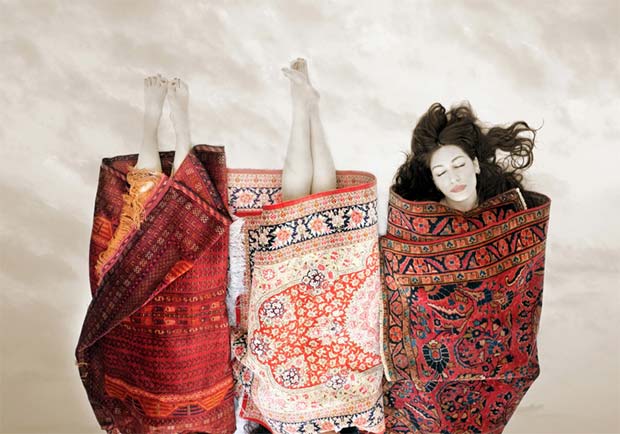 Babak Kazemi / The exit of Farhad and Shirin, 100x70 cm, Edition of 6, 2012 / Courtesy of Galerie Kashya Hildebrand
Babak Kazemi / The exit of Farhad and Shirin, 100x70 cm, Edition of 6, 2012 / Courtesy of Galerie Kashya Hildebrand
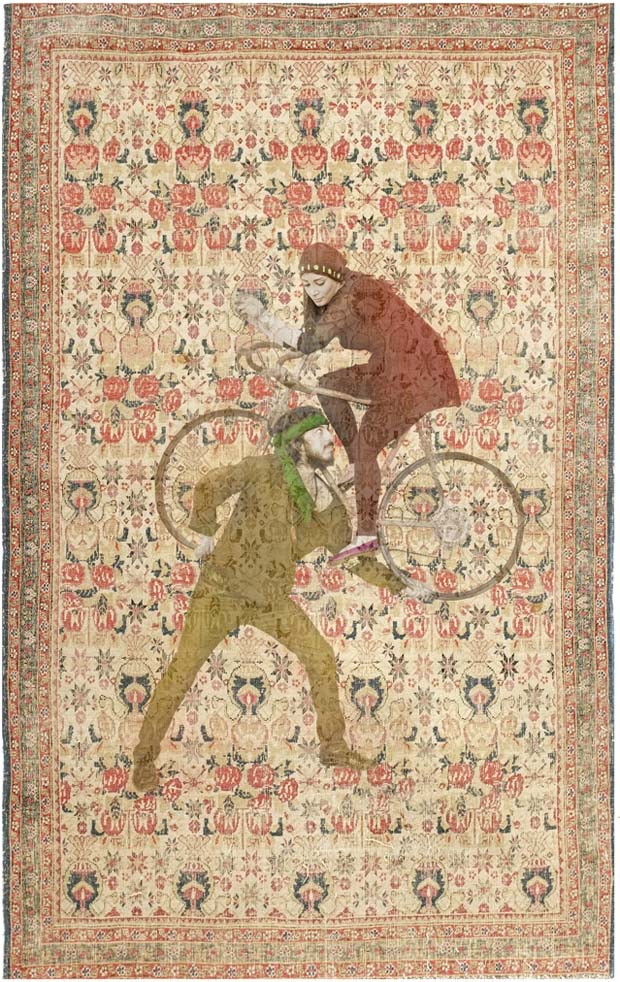 Babak Kazemi / The exit of Farhad and Shirin, 100x70 cm, Edition of 6, 2012 / Courtesy of Galerie Kashya Hildebrand
Babak Kazemi / The exit of Farhad and Shirin, 100x70 cm, Edition of 6, 2012 / Courtesy of Galerie Kashya Hildebrand
Farah Ossouli, the grande dame of contemporary Persian art, was one of the first artists to appropriate miniature painting as an authentic, personal, and contemporary artistic practice for portraying women’s lives. The gouache paintings on view depict the predicament of women in regions of conflict, transnationally and transculturally. While her painting style may appear traditional, a closer look yields layers of meaning, references, and innovations.
Framed in decorative motifs, some depictions resonate with hand-written Farsi quotes from the contemporary poems of Forough Farrokhzad while others are influenced by the 14th-century lyric poet Hafiz. Image, color, and design create an intricate dialectic between Eastern and Western as well as old and new references and symbols. Ossouli’s embedded theme in this series is the discrepancy between the portrayal of world events in packaged news and sanitized media images on the one hand and the lived realities on the other. In accordance with the Persian artistic spirit, Ossouli’s exquisitely delicate and intricate designs rendered in exceptional color compositions attract viewers, who then bear witness to disconcerting events that are either about to happen or have already happened.
Ossouli’s style evolved over three decades of cultural isolation following the 1979 revolution in Iran. Searching for a meaningful form of self-expression, she found it in the rich tradition and refined beauty of Persian paintings, architecture, and decorative arts. She occupies a prominent position as an artist in Iran not only because of her unique artistic style and prodigious oeuvres but also because of her active involvement in Iranian contemporary art.
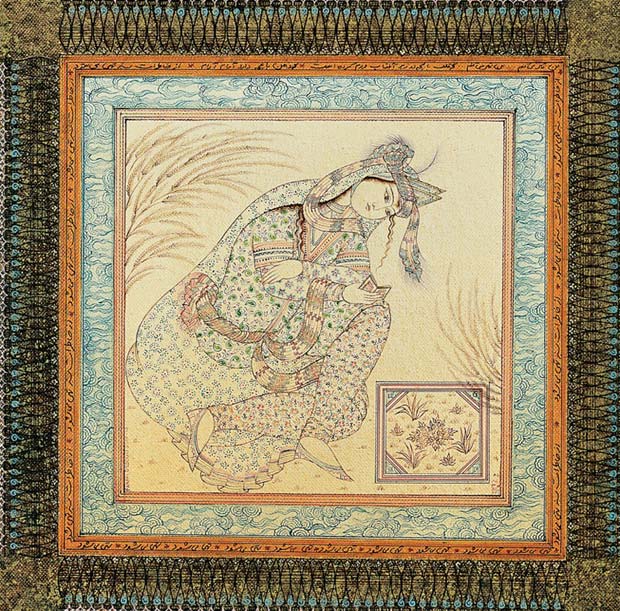 Farah Ossouli / Flowerbed- ArsPoetica Series, 30x30 cm, Acrylic on paper, 2010 / Courtesy of Galerie Kashya Hildebrand
Farah Ossouli / Flowerbed- ArsPoetica Series, 30x30 cm, Acrylic on paper, 2010 / Courtesy of Galerie Kashya Hildebrand
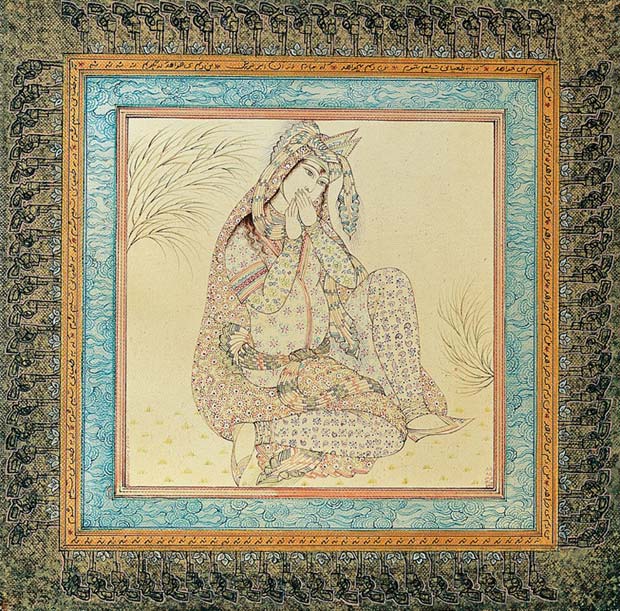 Farah Ossouli / Flowerbed- ArsPoetica Series, 30x30 cm, Acrylic on paper, 2010 / Courtesy of Galerie Kashya Hildebrand
Farah Ossouli / Flowerbed- ArsPoetica Series, 30x30 cm, Acrylic on paper, 2010 / Courtesy of Galerie Kashya Hildebrand
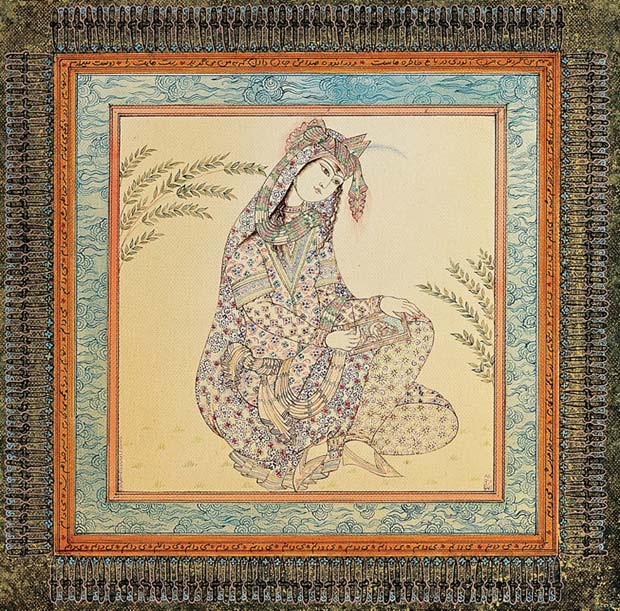 Farah Ossouli / Flowerbed- ArsPoetica Series, 30x30 cm, Acrylic on paper, 2010 / Courtesy of Galerie Kashya Hildebrand
Farah Ossouli / Flowerbed- ArsPoetica Series, 30x30 cm, Acrylic on paper, 2010 / Courtesy of Galerie Kashya Hildebrand
Sharifi’s most recent series, The Desert beyond the City Belongs to Me, provides an interesting counterpoint to her previous Maxiture series, both of which are exhibited here together. In Maxitures, Sharifi inserted issues from contemporary culture into traditional miniature paintings by way of photographic collage. By inserting contemporary details into historical fiction, Sharifi creates new stories that depict everyday Iranian life and highlight the conflict between old and new values.
In her new series, The Desert beyond the City Belongs to Me, her use of miniature figures is consistent, but the site of interaction between the contemporary and the historic has been reconsidered. Instead of bringing the contemporary into 15th-century representations, she imports miniature figures into photographs of contemporary Iran and interrogates the modern surroundings. In this series, Sharifi tells the story of cultural and political life in Iran as an amalgam of paradoxes and contradictions that stem from the area’s culture, religion, and system of government.
Her work emerges from the protest movement that arose following the contested 2009 presidential elections, a movement that not only helped spark the larger Arab spring in the region but also brought to the surface an underlying contradiction within the very name of the country: how can a country be a republic and a democracy accountable to its citizens and yet claim to be a theocracy accountable to a higher being? By bringing elements of classical Persian iconography together with contemporary subjects, the Desert series addresses this complex issue with a compelling restaging and a collapse of time. The specific moments and specific stories Sharifi relates originate in the contemporary, while the traditional miniature figures amplify and draw insightful correlations to the past.
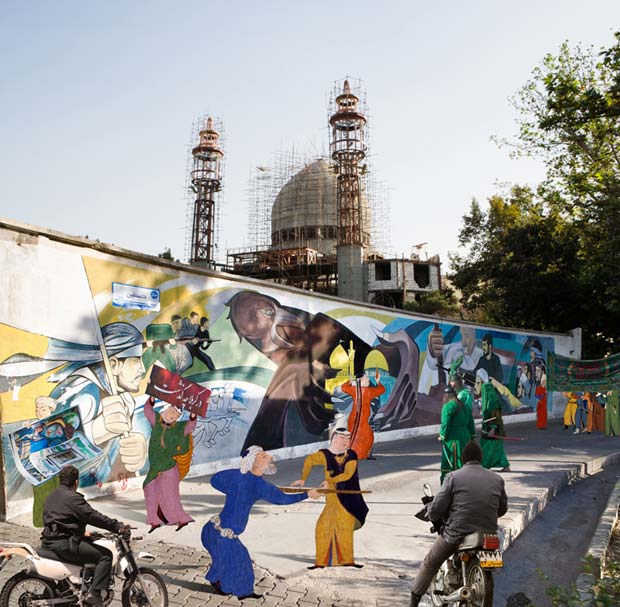 Soody Sharifi / The Demonstration, 93x91 cm, Edition of 6, Archival Inkjet Print, 2012 / Courtesy of Galerie Kashya Hildebrand
Soody Sharifi / The Demonstration, 93x91 cm, Edition of 6, Archival Inkjet Print, 2012 / Courtesy of Galerie Kashya Hildebrand
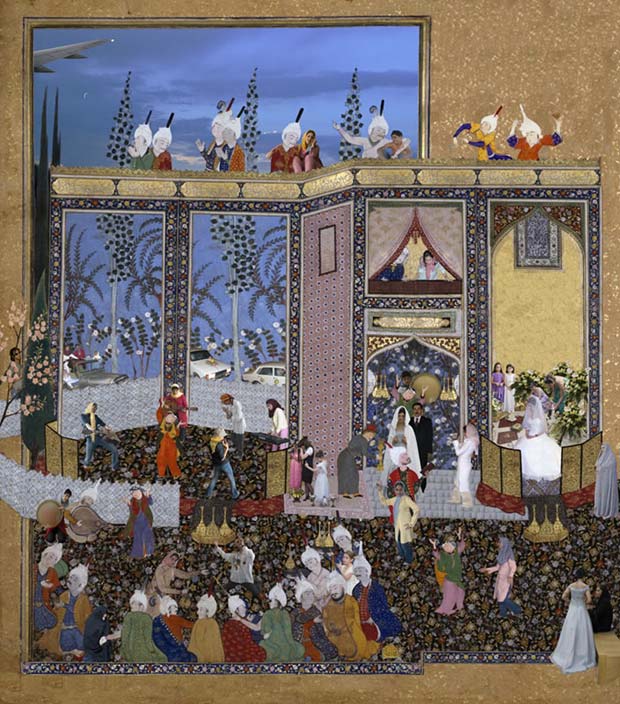 Soody Sharifi / The Feast of ID, 127x112 cm, Edition of 3, Archival Inkjet Print, 2011 / Courtesy of Galerie Kashya Hildebrand
Soody Sharifi / The Feast of ID, 127x112 cm, Edition of 3, Archival Inkjet Print, 2011 / Courtesy of Galerie Kashya Hildebrand
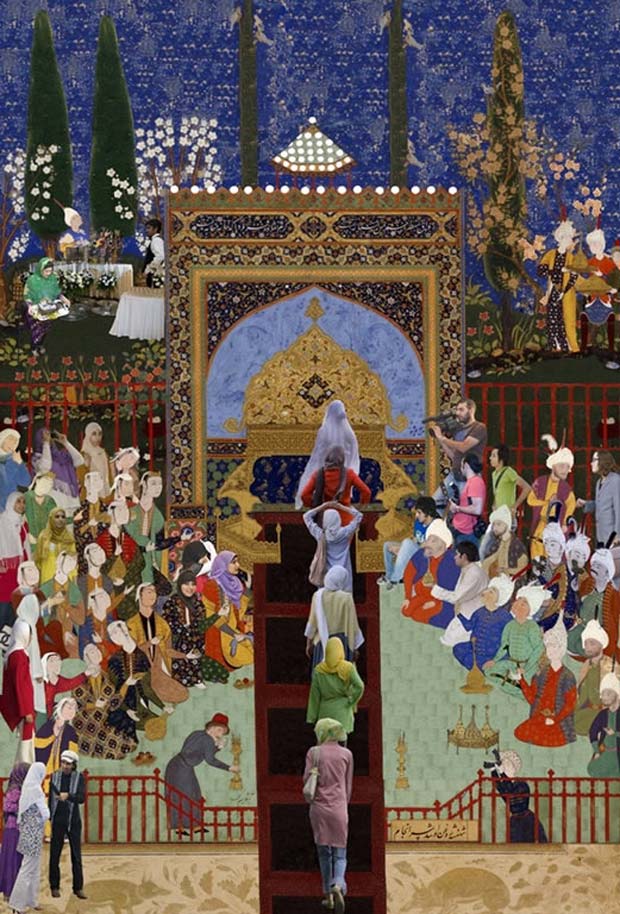 Soody Sharifi / Fashion Week, 150x100 cm, Edition of 3, Archival Inkjet Print, 2011 / Courtesy of Galerie Kashya Hildebrand
Soody Sharifi / Fashion Week, 150x100 cm, Edition of 3, Archival Inkjet Print, 2011 / Courtesy of Galerie Kashya Hildebrand
Comments
Add a comment